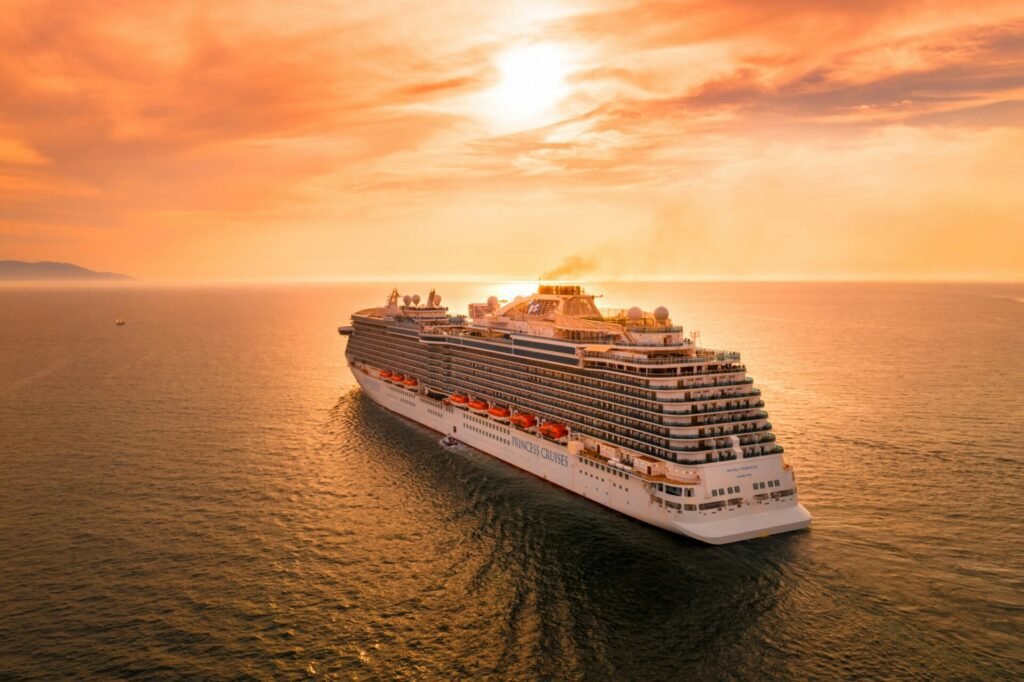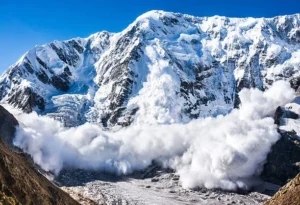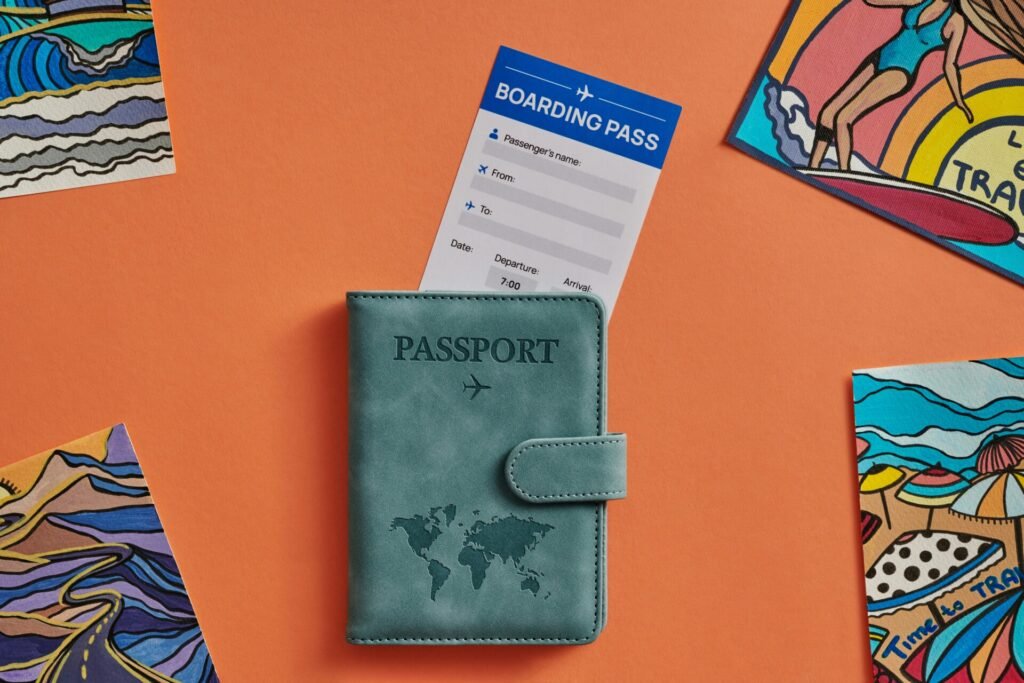Thinking about a trip to Alaska? You’re not alone—this incredible destination is on the bucket list of many adventurers and nature lovers.
But if you’re planning to journey to the Last Frontier, you might find yourself asking, “Do I need a passport to go to Alaska?” It’s a question that surprises many travelers, and there’s a lot of confusion around it.
I’ve traveled to Alaska, wandered its vast wilderness, and chatted with plenty of fellow travelers along the way. And let me tell you, understanding Alaska’s travel requirements can make or break your adventure.
You might assume that because Alaska is so remote and wild, it must require a passport, right? Well, not exactly.
In fact, Alaska is part of the United States, so you don’t need a passport to fly there if you’re coming from another U.S. state. However, there are some important details and exceptions to consider, especially if you’re planning a cruise or taking the scenic route through Canada.
Knowing the ins and outs of these rules can save you from unexpected hassles and ensure you’re fully prepared for your Alaskan adventure. So, let’s dive in and clear up the confusion once and for all!
Traveling to Alaska from the Lower 48 States

Planning a trip from the Lower 48 to Alaska is like preparing for a journey to another world—a place where glaciers meet the ocean, and wildlife roams freely under the midnight sun.
But before you start dreaming about spotting moose or catching a glimpse of the Northern Lights, let’s talk about the practical side of getting there.
As someone who’s hopped on a flight from Seattle to Anchorage more times than I can count, I can tell you that navigating the travel rules is simpler than you might think—especially if you’re a U.S. citizen.
Domestic Travel Within the United States
When it comes to travel within the United States, Alaska is considered a domestic destination. That means traveling from any of the Lower 48 states to Alaska is just like flying from New York to California or taking a road trip from Texas to Florida.
No customs, no international paperwork—just a straightforward domestic trip. For many first-time travelers, that’s a surprise, given how Alaska seems so far removed from the continental U.S. But once you land and step out into that fresh, crisp Alaskan air, you’ll realize just how connected it still feels to the rest of the country.
The cruise industry is a major component of Alaska’s tourism, accounting for about 60% of summer visitation. In 2024, projections suggest around 1.64 million cruise passengers will visit Alaska, reflecting the ongoing popularity of cruise travel to the region.
No Passport Required for U.S. Citizens
Here’s the good news: if you’re a U.S. citizen flying directly to Alaska from another state, you do not need a passport.
That’s right—you can leave your passport tucked away in that drawer where it usually gathers dust between international trips.
As a traveler, this makes things much easier. You simply need your standard government-issued photo ID, like a driver’s license, to hop on a plane to Anchorage, Fairbanks, or any other Alaskan city. I’ve had plenty of friends get this wrong and pack their passports “just in case,” but trust me—save the passport for your next trip to Europe or Asia.
Real ID Act Requirements
Now, there is one catch you need to know about: the Real ID Act. If you haven’t heard of it, you’re not alone—this one can sneak up on you!
Starting in 2025, all travelers flying within the U.S. must have a Real ID-compliant driver’s license or another acceptable form of identification, like a passport or military ID. I’ve seen a few travelers panic at the airport gate, realizing their old ID wouldn’t cut it for a flight to Juneau or Ketchikan.
To avoid that drama, check if your ID is Real ID compliant; it usually has a star in the upper right corner. If it doesn’t, it might be time for a quick trip to the DMV before your Alaskan adventure.
So, whether you’re dreaming of exploring Denali, cruising through the Inside Passage, or simply soaking in the rugged beauty of the Alaskan wilderness, rest easy knowing that getting there is as straightforward as any domestic trip—just don’t forget to double-check your ID status!
Understanding Alaska’s Geography
When people think of Alaska, they often imagine a distant, icy wilderness full of snow-capped mountains, roaming wildlife, and vast, untouched landscapes. And while that’s certainly part of the picture, there’s a lot more to understand about this unique state. Having traveled across Alaska, from the bustling streets of Anchorage to the quiet, remote villages deep in the tundra, I’ve come to appreciate not just its rugged beauty but also its unique geography. Let’s break down what makes Alaska so distinct when it comes to U.S. travel.
Alaska as Part of the United States
First things first—yes, Alaska is very much a part of the United States. It might feel like a world away, but it’s America’s 49th state, admitted back in 1959.
There’s no need to brush up on your Russian or worry about crossing international borders if you’re coming from another state.
But despite its statehood, Alaska feels worlds apart from the rest of the country. It’s like flying from Seattle to Anchorage is over 1,400 miles, about the same distance as flying from New York City to Miami!
This separation gives Alaska its unique blend of American culture mixed with the rugged, frontier spirit that you won’t find anywhere else in the lower 48.
The travel and tourism sector contributed 9.1% to global GDP in 2023, representing a 23.2% increase from 2022. The sector accounted for approximately 334 million jobs, or 10.5% of total employment globally.
Fun Fact: Alaska Airlines is using Google Cloud’s data and AI capabilities to deliver personalized experiences throughout the travel experience.
Geographic Isolation and Proximity to Canada
Now, here’s where things get really interesting. Alaska is not only the largest state in the U.S.—more than twice the size of Texas—but it’s also geographically isolated from the contiguous United States. It’s tucked up in the northwest corner of North America, sharing a long border with Canada.
And that’s where the confusion often starts. To drive to Alaska from the rest of the U.S., you have to cross through Canada, which does require a passport.
I’ve driven the scenic Alcan Highway that winds through the Yukon Territory, and trust me, the border checks are no joke!
So, while you don’t need a passport to enter Alaska by plane from another U.S. state, driving or cruising through Canadian waters is a different story. Knowing this is crucial for planning your Alaskan adventure without any surprises.
Understanding these geographical quirks is key to navigating Alaska’s travel requirements smoothly. It’s a place where the U.S. feels a little wilder, a little more mysterious—and definitely worth the journey!
Traveling to Alaska Through Canada
If you’re feeling adventurous and want to explore Alaska at your own pace, there’s nothing quite like a road trip through Canada. Having driven the legendary Alaska Highway (or Alcan Highway, as locals call it) more than once, I can assure you that the journey is as thrilling as the destination itself.
From towering mountain ranges to endless forests and quaint roadside towns, the drive offers an unforgettable prelude to the Alaskan wilderness. But if you plan on taking the scenic route to the Last Frontier, there are some important border-crossing rules to keep in mind. Let’s break it down!
Driving Through Canada
For those embarking on a road trip to Alaska from the Lower 48, you’ll almost certainly find yourself driving through Canada.
The most popular route is the Alaska Highway, which starts in Dawson Creek, British Columbia, and winds its way through the Yukon Territory before crossing
into Alaska. This drive is a rite of passage for many, filled with jaw-dropping scenery and the chance to spot bears, moose, and eagles along the way.
However, it also means crossing an international border—twice. Once when you enter Canada, and again when you re-enter the U.S. at the Alaska border. It’s a trip worth taking, but knowing what’s required at these border crossings is key to a smooth journey.
Passport Requirements for Entering Canada

Here’s where things get serious: if you’re planning to drive through Canada, a valid passport is a must. Unlike flying directly to Alaska, where you can leave your passport at home, entering Canada by car requires proper documentation.
I’ve seen more than a few would-be adventurers turned around at the border for not having a valid passport or other approved documents like a NEXUS card or an enhanced driver’s license. And trust me, you don’t want to be stuck on the wrong side of the border after driving for hours through the rugged wilderness.
Make sure your passport is up to date before you head out, and remember that everyone in the car—adults and children alike—will need one to cross into Canada.
Re-entering the United States from Canada
Once you’ve soaked in all that Canadian beauty, it’s time to cross back into the United States, and this is where another checkpoint awaits. Re-entering the U.S. from Canada isn’t too complicated, but you’ll need to have your passport ready for inspection by U.S. Customs and Border Protection officers.
I remember once crossing back into Alaska at the border near Tok, where the agents were friendly but thorough—they checked everything from our IDs to the fresh salmon we’d bought along the way. Keep in mind that the rules for re-entry are strict; make sure your documents are in order, and be aware of any restrictions on items you can bring back into the U.S.
Driving to Alaska through Canada is one of the great North American road trips, but it comes with its own set of requirements. Prepare your paperwork, plan your route, and get ready for a drive that you’ll be talking about for years to come!
Traveling to Alaska from International Destinations
Alaska may seem like a far-off destination to most international travelers, but trust me—it’s worth every mile. Having met countless travelers from all over the globe while exploring Alaska,
I can tell you that this rugged, awe-inspiring state leaves a mark on everyone who visits. Whether you’re dreaming of hiking through Denali National Park, cruising past massive glaciers, or experiencing the unique cultures of native Alaskan communities, getting to Alaska from an international destination is easier than you might think.
Direct International Flights to Alaska
While Alaska might seem like it’s on the edge of the world, there are actually a few direct international flights that can get you there. Major cities like Anchorage serve as the primary hub for international arrivals.
Direct flights are available from places like Vancouver, Canada; Frankfurt, Germany; and in the summer months, even Seoul, South Korea.
I’ve flown the Vancouver to Anchorage route, and let me tell you—it’s quite something to watch the endless green forests and winding rivers of the Pacific Northwest give way to the snow-capped peaks and vast wilderness of Alaska.
Depending on the season and demand, direct routes may vary, so it’s always a good idea to check ahead and book early to get the best options.
For those coming from other parts of the world, your best bet is to connect through major U.S. hubs like Seattle, Los Angeles, or Chicago, which offer frequent flights to Anchorage and Fairbanks.
The journey may be long, but trust me—when you see Alaska’s rugged beauty from the plane window, you’ll realize it was all worth it.
Passport and Visa Requirements for International Travelers
Now, let’s talk paperwork—because nothing ruins a great trip like getting stuck at immigration. For non-U.S. citizens, a valid passport is a must when entering Alaska. But that’s just the starting point. Depending on your nationality, you may also need a visa or an Electronic System for Travel Authorization (ESTA) if you’re coming from a Visa Waiver Program country.
I’ve met travelers who have been caught off guard by this, assuming that Alaska, being so remote, might have different rules than the rest of the U.S. Spoiler alert: it doesn’t!
So, make sure you check your visa requirements well in advance and apply accordingly.
Alaska Travel by Sea
If you’ve ever dreamed of experiencing Alaska’s stunning landscapes while lounging on a cruise ship, you’re in for a treat.
I’ve had the pleasure of cruising through Alaska’s breathtaking fjords and icy waters, and let me tell you, it’s an adventure like no other.
From the thrill of spotting whales to the awe-inspiring views of glaciers calving into the sea, cruising is one of the best ways to explore this incredible destination. But before you set sail, there are some key travel details you’ll need to know. Let’s dive into everything you need to make your Alaskan cruise smooth sailing!
Cruise Travel to Alaska
Alaska is one of the premier cruise destinations in the world, and for good reason.
Each summer, ships of all sizes glide through the pristine waters of the Inside Passage, offering a front-row seat to some of the most dramatic scenery on the planet.
Whether you’re embarking on a luxurious mega-liner or a charming small ship, you’ll be treated to an ever-changing panorama of glaciers, towering mountains, and vibrant wildlife.
Popular ports of call include Juneau, Ketchikan, and Skagway, each with its own unique charm and activities. I’ve had the chance to visit charming towns and marvel at natural wonders from the comfort of my stateroom—there’s truly nothing quite like it.
U.S. Citizens Traveling on Cruises
For U.S. citizens, traveling to Alaska on a cruise is straightforward, but it’s not without its nuances. If your cruise itinerary includes stops in Canadian ports, such as Vancouver or Victoria, you’ll need to have a valid passport.
Even though your final destination is Alaska, Canadian authorities require that all cruise passengers have proper documentation to enter their country.
I remember the brief stop in Vancouver on one of my cruises—though it was just a few hours, having my passport handy made the process smooth and hassle-free. So, if your cruise includes a stopover in Canada, don’t forget to pack your passport!
International Travelers on Alaska Cruises

For international travelers, the rules are a bit more involved. If you’re flying in from overseas and hopping on a cruise in Alaska, you’ll need a valid passport to enter the United States.
But if your cruise also makes stops in Canadian ports, you’ll need to meet Canadian entry requirements as well.
This often means having a visa or an Electronic Travel Authorization (eTA) depending on your nationality. I’ve chatted with many international cruisers who were initially surprised by the need for extra documentation, but once they sorted everything out, their trip went off without a hitch. Make sure to check the entry requirements for both the U.S. and Canada well in advance of your trip to avoid any last-minute surprises.
Cruising to Alaska is a spectacular way to see the state’s natural beauty while enjoying the comfort and convenience of a floating hotel.
With the right documents in hand and a bit of preparation, you’ll be ready to embark on an unforgettable adventure across one of the most stunning landscapes on Earth. So, grab your best camera, pack your sense of wonder, and get ready for an Alaskan journey that will leave you with memories to last a lifetime!
Rules for Children Traveling with Parents
- Identification: Children generally need identification for domestic flights. Acceptable forms include a birth certificate or a passport.
- Airline Policies: Check with your airline for specific requirements, as they can vary.
- Proof of Age: Airlines may require proof of age, especially for children under two years old who are traveling.
- Documentation: Keep a copy of your child’s birth certificate or passport readily available.
Unaccompanied Minors and Identification
- Identification: Unaccompanied minors need proper identification for travel. This may include a passport or other forms of ID.
- Airline Procedures: Most airlines have specific unaccompanied minor services and guidelines. These include completing additional forms and paying any associated fees.
- Pickup Information: Provide the airline with detailed information about the person who will pick up your child upon arrival. The pickup person will need to show ID and sometimes a copy of the unaccompanied minor form.
- Travel Plans: Ensure that your child is aware of the procedures and feels comfortable with the travel arrangements.
These steps will help ensure a smooth and safe journey for minors traveling to Alaska.
FAQs
Do I need a passport to go to Alaska?
No, you do not need a passport for domestic travel to Alaska.
Do you need a passport to go to Alaska on a cruise?
Yes, if your cruise makes stops in Canadian ports.
Can you go to Alaska without a passport?
Yes, for domestic flights from within the U.S., a passport is not required.
Do You Need a Passport for Alaskan Ferry Travel?
Yes, if the ferry travels through Canadian waters.
What Are the Entry Requirements for Pets?
Pets typically need a valid rabies vaccination certificate and may require a health certificate.
Can You Enter Alaska from Canada Without a Passport?
No, you need a passport to enter Alaska from Canada.
Are There Special Rules for RV Travelers?
RV travelers need to follow standard vehicle entry requirements and may need to carry identification for border crossings.
What Should I Know About Health and Safety When Traveling to Alaska?
Be aware of weather conditions, prepare for remote locations, and ensure you have necessary medications and health insurance.












